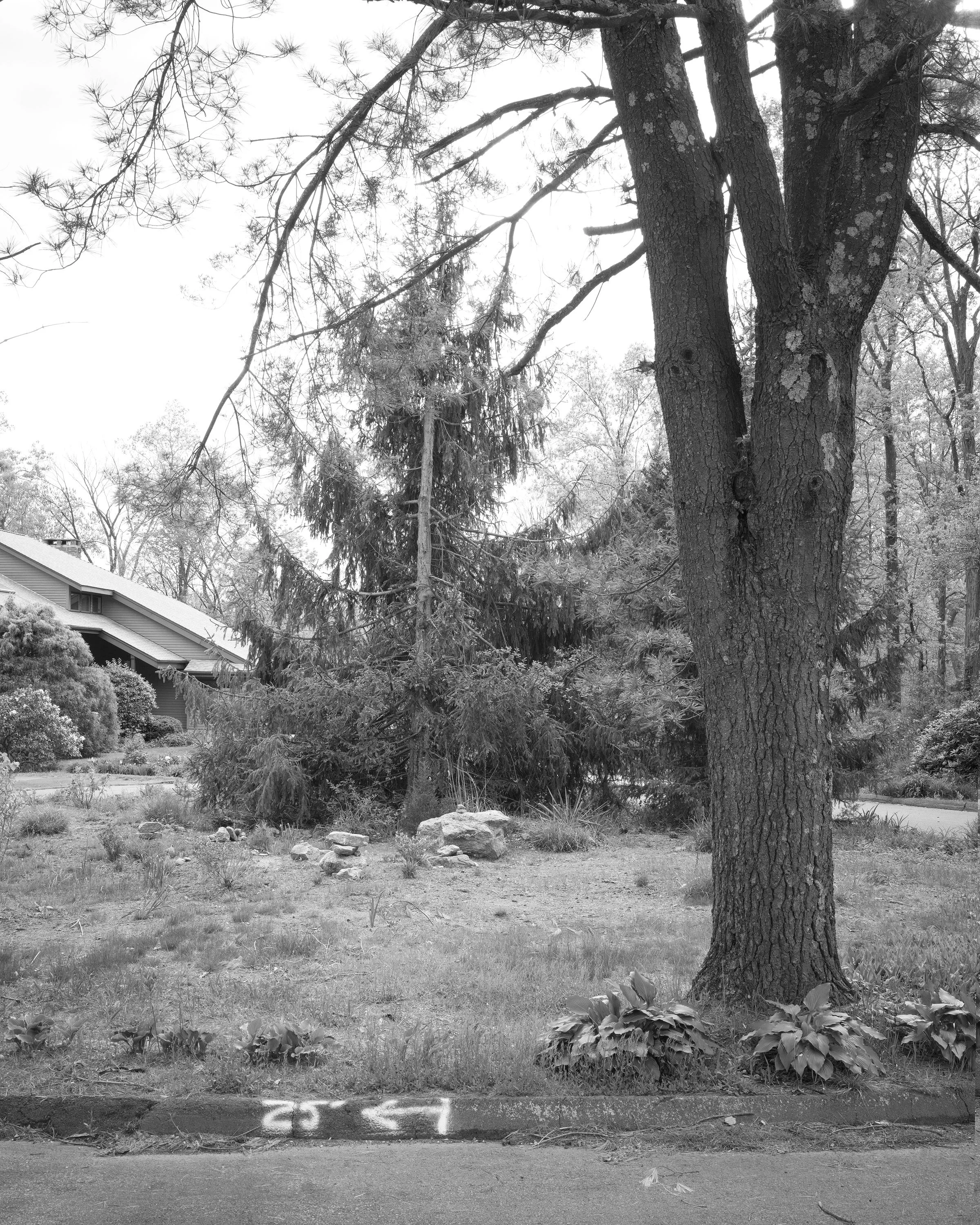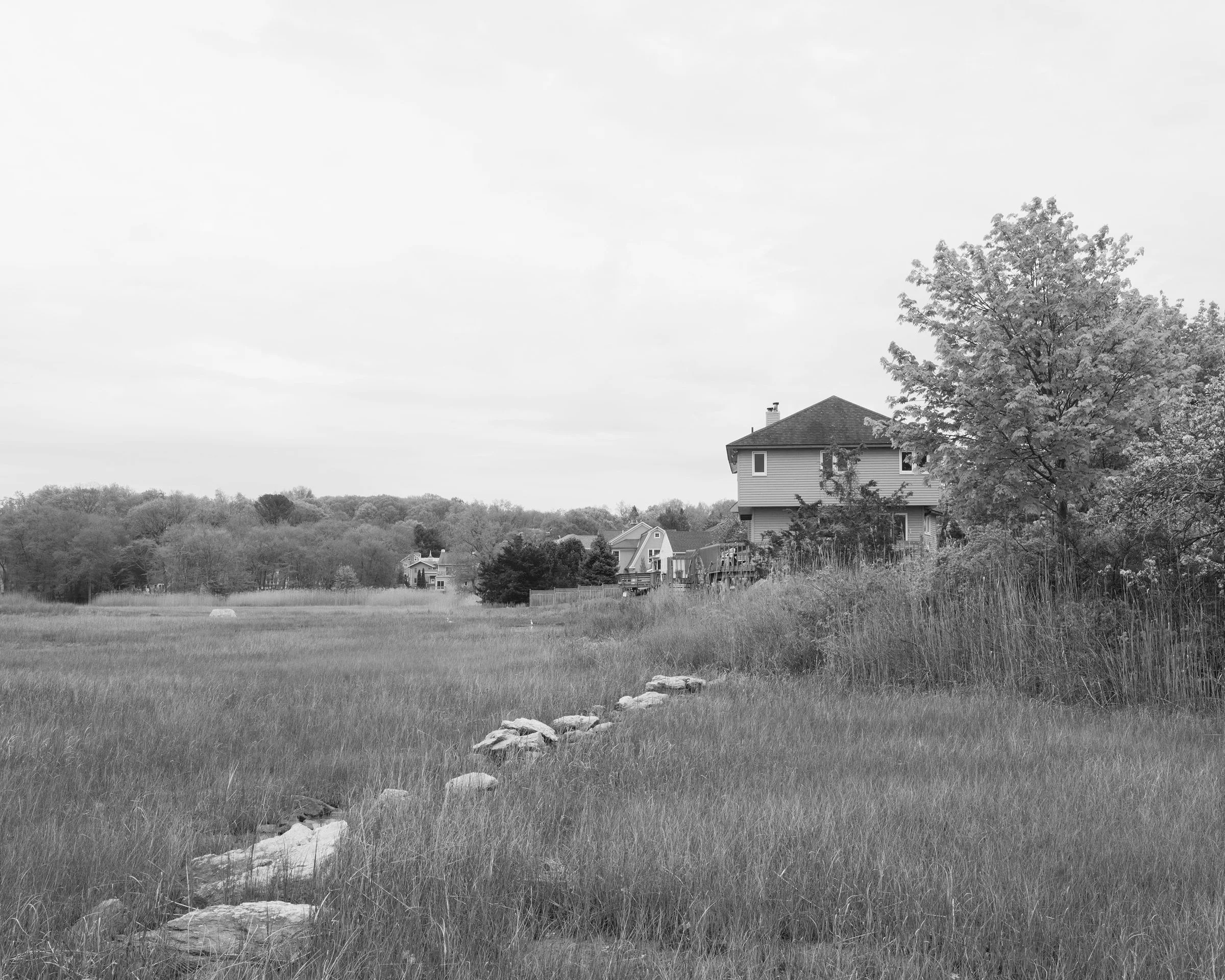CUL-DE-SAC
The images here are from recent work that originates close to home – a semi-rural area along the Connecticut shoreline. It is informed by the modern land-use tension between development and preservation, involving areas designated as “open space” that are often used as a tradeoff for building housing communities on former farmland. The suburban Connecticut town where I live is officially designated a “rural” community although many of the historic farms that once defined the town have been sold to residential developers. Often the new developments result in the use of Cul-de-Sacs that plunge into the designated open space. What’s left is an odd fragmentation, and a sense of isolation: houses are sited along manicured streets that go nowhere. I live on a cul-de-sac. The landscape has a sense of fragmentation: cows and horses, then a cul-de-sac, then an apple farm, and more cul-de-sacs. A highway runs through the community like a main artery: to live in the suburbs one must have a car. A variation of a dead-end street, the cul-de-sac provides a bulb at the end of the street wide enough for uninterrupted turning space for neighborhood automobiles or service vehicles - there is no incentive or reason for other traffic, unlike the city grid system of roads. An open space reserve is an area of protected or conserved land or water on which development is indefinitely set aside. The equilibrium between development and land conservation is a critical and oftentimes fraught balance; many see the preservation of open space crucial to a positive quality of life, but the economics involved in maintaining open space is often fraught. Preserved open space is traditionally not contiguous, although a movement is underway in some communities to change that. Fragmented parcels of green space alter animal and bird migration patterns and generally skews the overall ecological balance of a region. Wild animals are trapped in the patchwork of backyards; gardens are decimated by grazing deer, and water quality is compromised by fertilizers. Backyard spotlights confuse migrating birds, and make stars invisible to surrounding neighbors.The captured moments are gentle, and quiet. I move slowly, looking for the light. There are no grand gestures, only intimate glimpses.

























